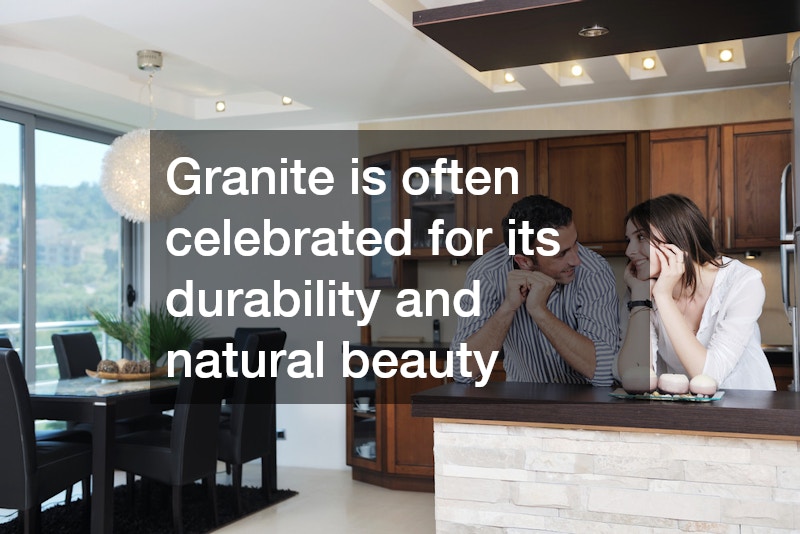Learn how to choose the right countertop for your home by carefully evaluating factors such as design preferences, material durability, and cost. Given the wide range of choices available, this guide is designed to streamline your decision-making and ensure you select the right option for your needs.
What Are the Most Popular Countertop Materials and Their Benefits?
When it comes to countertop materials, each option has its unique benefits and drawbacks that cater to different preferences and needs. Granite is often celebrated for its durability and natural beauty, making it a popular choice among homeowners seeking elegance and functionality.
Its heat and scratch resistance make granite an ideal option for busy kitchens.
Quartz, engineered stone, is another highly popular choice. Its non-porous surface makes it resistant to stains and bacterial growth, which is essential for maintaining a hygienic kitchen environment. Available in a wide variety of colors and patterns, quartz can mimic the appearance of natural stones while providing consistent quality and longevity.
Marble offers a luxurious aesthetic that many homeowners desire, especially in bathrooms or high-end kitchens. While it requires more maintenance due to its porous nature, the timeless beauty and unique veining make marble a sought-after material for those who can invest in its upkeep. Laminate, on the other hand, is a budget-friendly alternative that allows for creative designs without breaking the bank.
How Do I Choose the Right Style for My Kitchen or Bathroom?
Choosing the right style counters for your kitchen or bathroom involves considering the existing decor and overall theme of your home. For a contemporary look, sleek surfaces and bold colors often work best, while a traditional kitchen may benefit from warmer, earthy tones and textured finishes. Matching your counters with cabinetry and flooring is also crucial in creating a cohesive aesthetic.
It’s essential to think about the color scheme in your space. Light-colored counters can open up a small area, creating an airy feeling, while darker hues may add a touch of drama and sophistication. Additionally, consider the texture; a polished finish offers a modern feel while honed or matte finishes can evoke a more rustic or traditional style.
Lastly, consider the countertop’s functionality in relation to your style. If you entertain often or have kids, durability and ease of maintenance may take precedence over pure aesthetics. Combining the elements of style with practical considerations will help ensure that your counters are both beautiful and functional.
What is the Budget Range for Different Countertop Options?
The cost of countertops can vary widely depending on the material, installation, and even geographical location. Granite, for example, generally costs between $40 and $100 per square foot, making it a premium option that many homeowners consider. For a more budget-conscious choice, laminate typically costs between $10 and $40 per square foot, making it an attractive alternative for those looking to maximize savings.
Quartz is at a mid-range price point, usually costing between $50 and $150 per square foot installed. While more expensive than laminate, the durability and maintenance benefits often justify the higher investment for many homeowners. Marble, known for its luxury appeal, can cost up to $200 per square foot, depending on the quality and source of the stone.
It’s crucial to remember that installation costs can significantly affect your overall budget, often ranging from $20 to $60 per hour for professional services. To save money, consider taking on smaller installation tasks yourself or participating in renovations during off-peak seasons. Evaluating your counter options based on both materials and installation will help you stay within your budget while achieving the desired look.
What Maintenance Is Required for Various Countertops?
Different countertop materials come with varying maintenance requirements, and understanding these needs will help you choose the right one for your lifestyle. Granite and quartz are relatively low-maintenance; granite needs periodic sealing, usually every year, to protect against stains and scratches. Quartz, being non-porous, is very easy to clean and typically requires just soap and water.
Marble, while beautiful, demands more attention; regular sealing is necessary to prevent stains, especially in kitchen environments where spills are common. Homeowners should also be cautious with acidic substances that may etch the surface. Its maintenance can be more labor-intensive, but for many, the visual appeal outweighs these challenges.
Laminate surfaces excel in ease of upkeep; simply wiping them down with a damp cloth is usually sufficient. However, they can be susceptible to chipping and scratches, requiring gentle handling. Understanding the maintenance a counter requires will ultimately assist in preserving its appearance and longevity throughout the years.
Choosing the right countertop for your home can enhance functionality and aesthetic appeal. By considering the materials, style, budget, and maintenance, you can make an informed decision that will suit your lifestyle and preferences for years to come.




